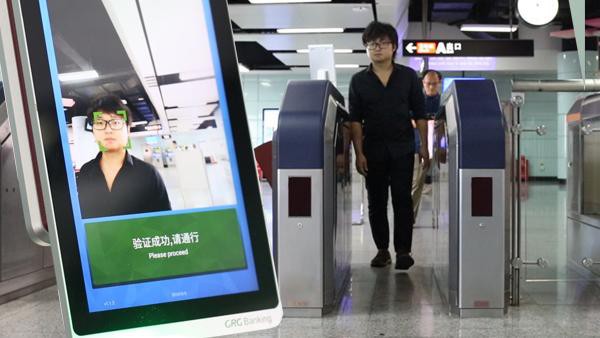Over 100 Million Chinese Are Paying For Their Purchase Using Facial Recognition
Harin - Oct 29, 2019

Facial recognition tech is shaping Chinese consumers behavior with more and more people have started using their faces to pay for their goods.
- Mumbai 2020 Power Outage Might Be A China's Cyberattack, India Official Claims
- TikTok China Banned Users From Making Videos To Show Off Wealth
- Indian Police To Install AI Cameras To Prevent Crime Of Rape
Facial recognition tech started to shape how Chinese consumers pay for their bills. More and more people have started using their faces to pay at stores or registering a monthly ticket at train stations.
In a country where mobile payments have been growing significantly in recent years, over 1,000 stores have started to install facial payment systems and more than 100 million Chinese have registered to use this tech.
While using facial recognition tech offers consumers convenience, many give warnings about how the country is expanding its citizen tracking to an alarming level.
To experience this convenience, users first need to register their original photos with the smartphone application of the face payment service providers. A new rule which will be in effect starting this December requires consumers to register their photos with their mobile service providers.

In May, the Seven-Eleven chain of convenience stores introduced facial payment service at their stores, mostly in the South of China, including Guangdong. Around 1,000 Seven-Eleven stores started adopting this system, allowing customers to pay for their goods by scanning their faces at the cashier.
According to a report from the chain operator, about 10% of customers in the business districts of Guangzhou paid for with their faces.
Even small restaurants have started using this technology. Moreover, there is an increase in the number of vending machines.
Under government push, facial recognition software is being accepted even at subway stations, allowing passengers to use their faces as boarding passes.
A new system installed at train stations in Guangzhou this September has brought about a seamless journey for commuters even during peak hours, a 23-year-old woman working in the city said.
Commuters can go through gates by looking at tablets equipped with ticket scanning systems. If they have already registered their faces through a smartphone application, they don’t even have to carry their phones to pay for their tickets.
The facial recognition ticket system has also been introduced in other cities including Beijing and Shanghai. This system is expected to be expanded to other cities in the next few years.
The value of mobile payments in China has reached around $28 trillion per year. However, some analysts predict that facial payment will replace smartphones in payment operations in the next two years.
Major mobile payment platforms in China like Alibaba’s Alipay or Tencent’s WeChat Pay both support facial payment systems. This payment method is faster, easier to use and smoother than mobile payments or fingerprint authentication.
This trend also fuels a series of Chinese AI startups on facial recognition technology, including Megvii Technology, founded in 2011. Other startups include SenseTime and YiTu. All of these are unicorn startups valued at more than $1 billion.

As facial recognition technology is getting better, it also raises concerns about state surveillance, privacy breaches, and increased abuse.
In September, Megvii pledged to accept social scrutiny for its efforts to protect user privacy after it received criticism for its use of facial recognition to monitor student behavior in the classroom. The system uses multiple cameras mounted around the classroom to closely monitor students, for example, if they are paying attention or not.
Chinese media criticized this system, arguing it would put too much pressure on students.
According to a law in effect in 2017, the Chinese government reverses the right to hold any private data owned by companies. The law requires companies in China to provide the information they have to the government when national security is at stake.
While China is increasingly adopting facial recognition tech, the rest of the world is still being skeptical about its use. The US and Europe have imposed strict restrictions on the use of the technology due to concerns about privacy and human rights violations.
Since 2018, the European Union’s GDPR law has banned the collection of biometric data including facial recognition data that can be used for identifying individuals.
In the US, four cities, including San Francisco have decided to restrict police and other public organizations from using facial recognition systems.
Featured Stories

Features - Jul 01, 2025
What Are The Fastest Passenger Vehicles Ever Created?

Features - Jun 25, 2025
Japan Hydrogen Breakthrough: Scientists Crack the Clean Energy Code with...

ICT News - Jun 25, 2025
AI Intimidation Tactics: CEOs Turn Flawed Technology Into Employee Fear Machine

Review - Jun 25, 2025
Windows 11 Problems: Is Microsoft's "Best" OS Actually Getting Worse?

Features - Jun 22, 2025
Telegram Founder Pavel Durov Plans to Split $14 Billion Fortune Among 106 Children

ICT News - Jun 22, 2025
Neuralink Telepathy Chip Enables Quadriplegic Rob Greiner to Control Games with...

Features - Jun 21, 2025
This Over $100 Bottle Has Nothing But Fresh Air Inside

Features - Jun 18, 2025
Best Mobile VPN Apps for Gaming 2025: Complete Guide

Features - Jun 18, 2025
A Math Formula Tells Us How Long Everything Will Live

Features - Jun 16, 2025
Comments
Sort by Newest | Popular